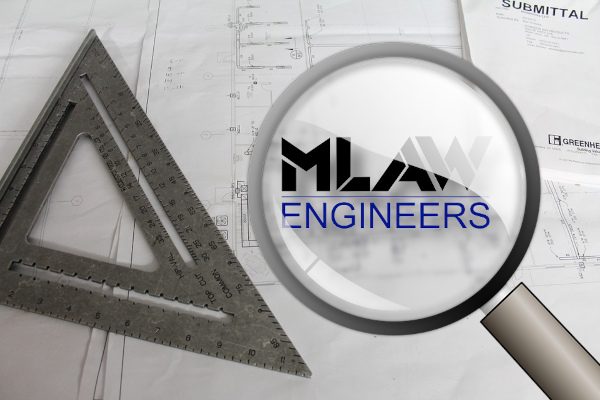Featured Article
When has a foundation or any other structural unit failed? There are three categories in which a structure could be placed with regard to structural performance:
- Obvious failure:
- Collapse
- Major distress and distortion
- Functionality Impairment
- Obvious non-failure:
- No distress
- No distortion
- Not so obvious:
- Some distress
- Some distortion
- Partial functionality impairment
Case I and case II above are clear cut, but case III requires criteria to determine which camp it would fall into. Therefore, we need foundation and structural performance criteria. Experience has shown the following differential movement to produce the distress indicated. The ratios indicated are “differential ratios” and are defined as vertical movement divided by horizontal distance over which it occurs.
- Sheet rock cracking, any wall – 1/480.
Sheet rock cracking – ceiling 1/360 - Masonry cracking – Eight foot wall will show cracking at 1/600 to 1/800.
Design standards – Typical foundation design procedures such as the B.R.A.B. #33 Report or the Post Tensioning Institute Design Manual, plus numerous other structural codes and criteria for various structural elements, call for designs permitting maximum movements ranging from deflection ratios of 1/360 to 1/800 for foundation flatness. For example, a deflection ratio of 1/360 translates to 1 inch in 30 feet. A question which is often of considerable interest is whether the observed out of levelness is due to movement since construction or is due to construction finishes.
Simply observing cracks in concrete or timber is not necessarily enough to indicate structural failure. Such cracking must be accompanied by distress in walls, ceilings, etc. or functionality loss or have excessive deformation exceeding some of the previously listed criteria. It should be noted that not all masonry or sheet rock cracking is due to structural movement. It could be drying shrinkage or thermal stress. Conversely, excessive deformation without cracking of the structural members can also create an effective failure in the super-structure.
Loss of functionality includes sticking doors or windows due to frame movement, inability to latch doors or accessible building envelope openings.
In conclusion, foundation or structural failures depend on the character of the structure and its use. Most residences and small commercial buildings can be considered in a failure mode if the foundation deformation exceeds 1/360. However, not all structures will indicate distress at this amount of movement, depending on the brittleness and character of the walls, both interior and exterior.

Explore
Framing Problems
Most single and multi-family residences and significant number of small to mid size commercial structures utilize wood framing for structural support. Terms: Timber Framing – refers to heavy timber 8″ x 8” or larger. Lumber – surface finished (S4S) wood members equal to or smaller than 6″ x 6″ or 2″ x 14″. GLU-LAM –…
Read MoreWhat Is the Deal about Fill?
Fill is a broad subject that is frequently a factor in residential foundation construction. Most often, fill is a legacy the builder inherits when he buys lots which have been filled by the developer. Fill can generally be divided into three types: Engineered fill Forming fill Uncontrolled fill Engineered fill is that which has been…
Read More
